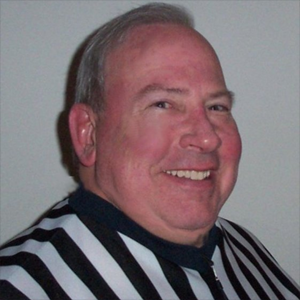
Rndballref
20 Years Experience
Chicago, IL
Male, 60
For twenty years I officiated high school, AAU and park district basketball games, retiring recently. For a few officiating is the focus of their occupation, while for most working as an umpire or basketball referee is an avocation. I started ref'ing to earn beer money during college, but it became a great way to stay connected to the best sports game in the universe. As a spinoff, I wrote a sports-thriller novel loosely based on my referee experiences titled, Advantage Disadvantage
Other than technical fouls, there are no free throws awarded when a team with possession of the ball commits a foul.
If it is in the possession of the player committing the foul, then it is a player control foul (NO free throws). If a player's team has possession and a foul is committed by a player on that team without the ball it is a team control foul (and again, NO free throws).
A team or player control foul is never awarded free throws, and it makes no difference if the team is in bonus.
Also, you might be asking if a charge is the only player control foul possible? The answer is no. A player with the ball might push, trip, hold, etc a defensive player and an offensive player without the ball might set an illegal screen, push, hold, etc in addition to charging. All of this is relative to NFHS rules.
If A is standing out of bounds, and a ball that was in bounds touches him before hitting the floor out of bounds, A is considered to have caused the ball to go out of bounds.
There is no provision in the rules for an official to overrule another, and there is no prohibition against it. One of the officials is designated as the referee, the others are umpire 1 and umpire 2. The referee has to settle all disputes not envisioned by the rule book. As I have said before, I always wanted my partners to approach me if they disagreed with my call and allow me to change my own call if my partner created doubt or if they clarified the play for me. But I always wanted the right to not change my call as well. By the original caller changing his call he can explain it to the coach adversely affected. Good referees have this discussion before the game and talk about how they are going to handle a disagreement on a call. Generally, this should not happen too often because each referee has a specific area to watch and while there is some overlap calls usually fall within one ref's primary responsibility area.
The inbounder is considered a player (not a sub or a bench personnel). If the ball has achieved inbound status (in your case when the ball is touched or deflected by an inbounds player) and then the inbounder-player who status is still out of bounds, the ball is awarded to the opposite team of the inbounder, assuming the ball hit the inbounder first (before hitting the floor, bleechers, out of bounds referees, spectators).
There is no definition in the NFHS rule book of a live or dead player. There is live/dead ball definition, but not player. Team members are defined as players, substitutes or bench personnel.
Dating Website Employee
 How does a dating site get its first 10,000 customers?
How does a dating site get its first 10,000 customers?
Fashion Model
 How much do promo girls at convention booths get paid?
How much do promo girls at convention booths get paid?
Architectural Project Manager
 Were there any structural deficiencies in the Twin Towers that made them fall?
Were there any structural deficiencies in the Twin Towers that made them fall?
No, you will not find intimidation in the rule book. There are unsportsmanlike fouls which may overlap intimidation. There is one local team which places two captains at the helf-court line during warm ups with their team in a few lines facing them. The captains move side to side with the players chanting in cadence. The drill ends with the team diving forward toward midcourt shouting in unison either "team" or "defense". It is very intimidating to the other team, but absolutely not illegal.
You are allowed to screen or block out if you get to a space before your opponent leaves his feet to get to that spot. It is no different than blocking out on a rebound.
OK. Got it. A player with the ball could push, hold, slap, trip, and charge for player control fouls. A team mate of the player with the ball could do the same plus illegal screens. All of these are control fouls with no free throws.
-OR-
 Login with Facebook
Login with Facebook (max 20 characters - letters, numbers, and underscores only. Note that your username is private, and you have the option to choose an alias when asking questions or hosting a Q&A.)
(A valid e-mail address is required. Your e-mail will not be shared with anyone.)
(min 5 characters)
By checking this box, you acknowledge that you have read and agree to Jobstr.com’s Terms and Privacy Policy.
-OR-
 Register with Facebook
Register with Facebook(Don't worry: you'll be able to choose an alias when asking questions or hosting a Q&A.)